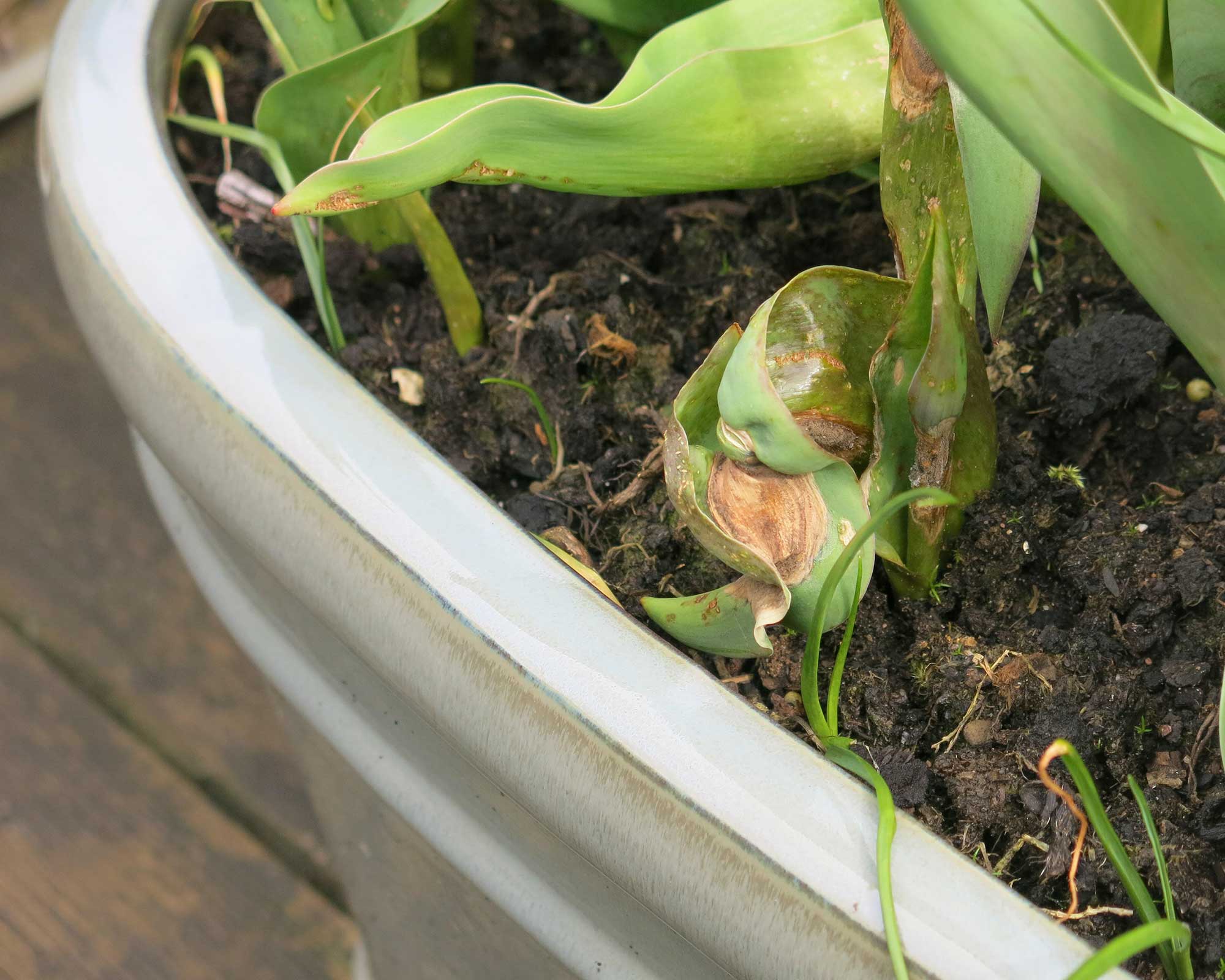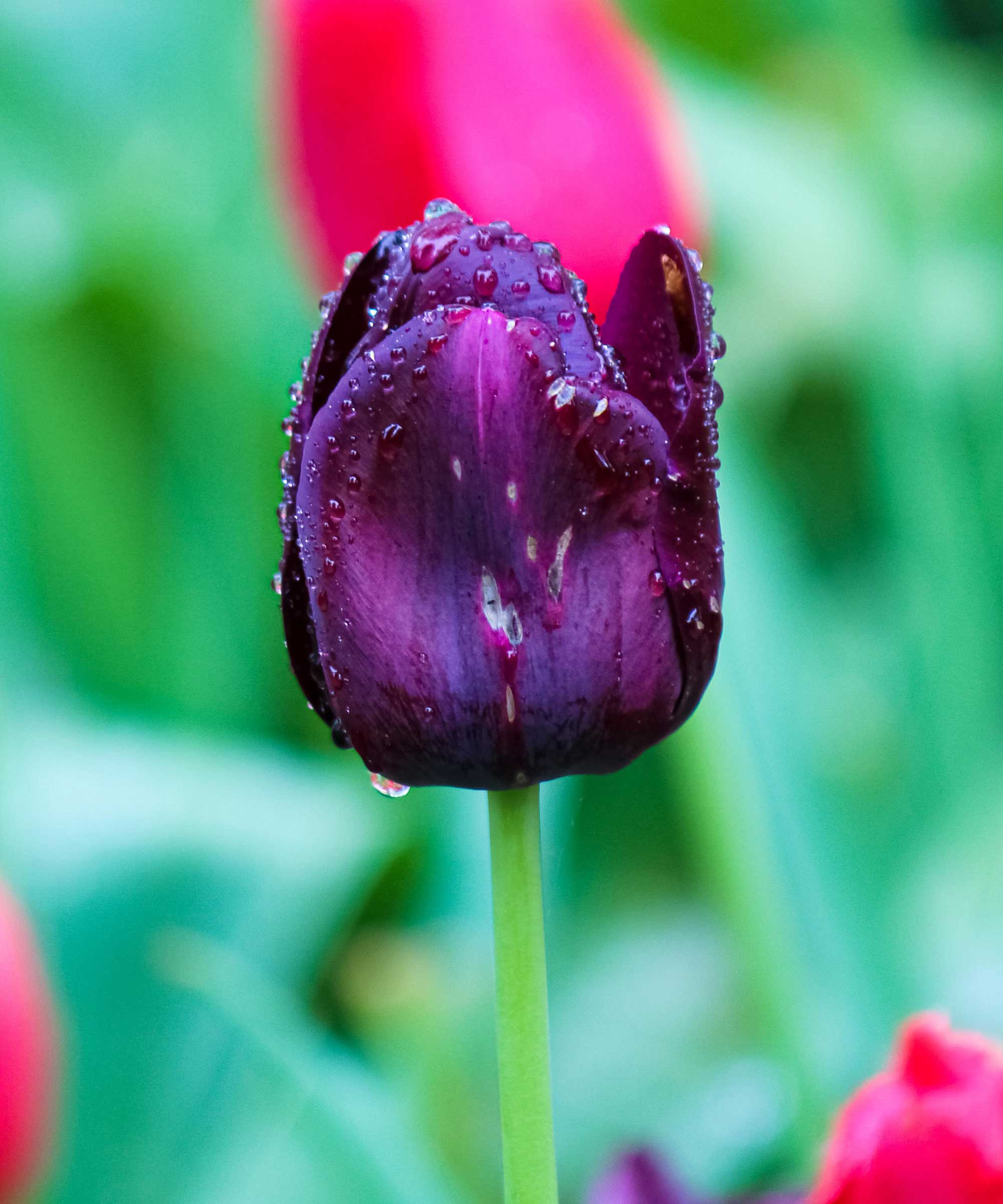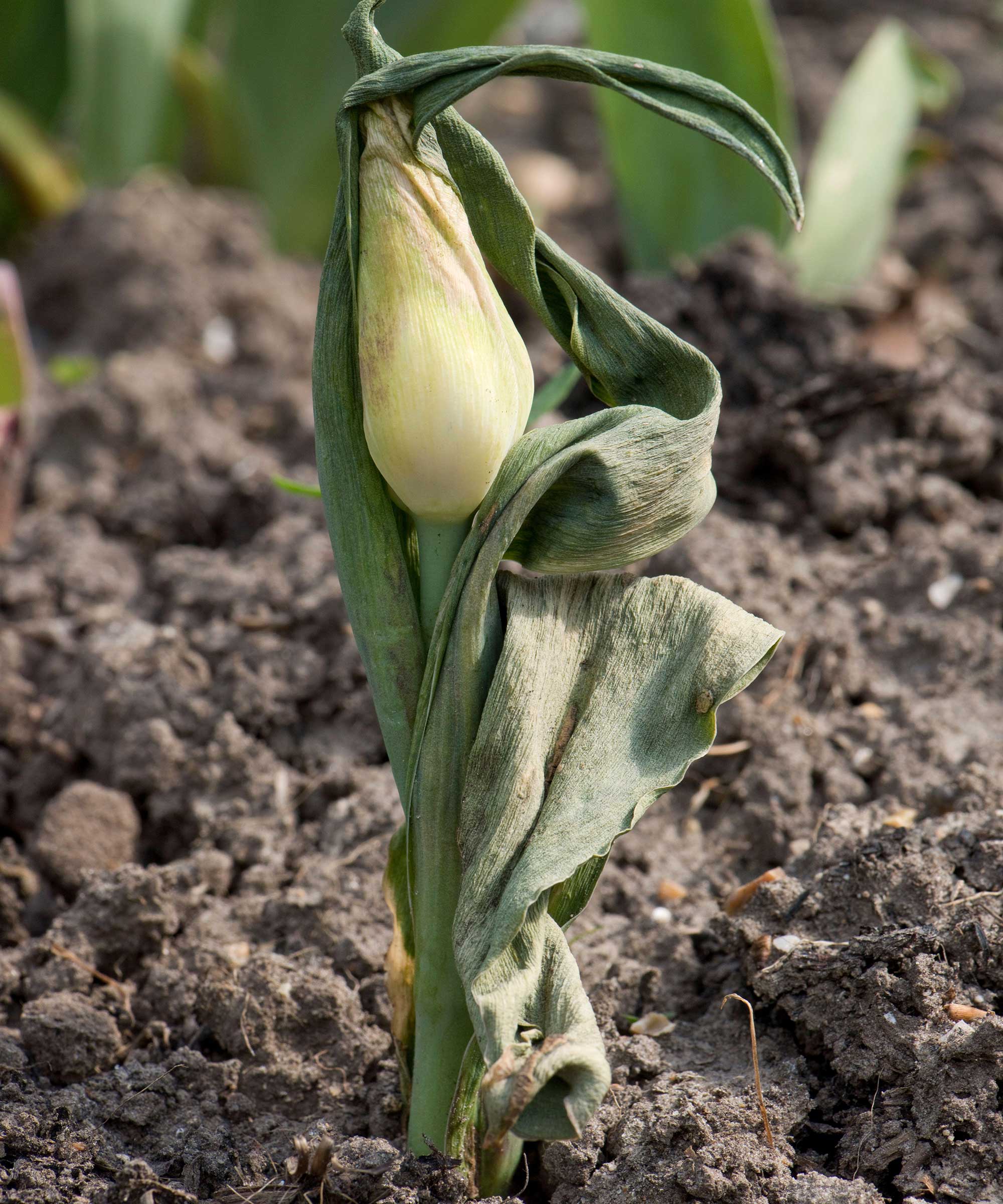What is tulip fire and how do you prevent it?
We explain all you need to know about tulip fire to reduce the risks when planting your spring bulbs


It's important to be wary of tulip fire if you're growing these blooms in your garden.
Planting tulip bulbs is an exciting task, full of anticipation for their springtime show. But, if they catch this common disease, their foliage appears scorched, as if from a fire. The petals are also affected.
Luckily, there are a few ways to reduce the risks. Our guide explains, so you can enjoy a dazzling display of these fabulous flowers when the warmer months roll around.
What is tulip fire?
'Tulip fire is a fungal disease that wrecks every part of the tulip,' explains Ruth Hayes of Amateur Gardening magazine. 'The problem is caused by the fungus Botrytis tulipae and symptoms include distorted leaves that develop brown spots of dead tissue which spread over the plant.
'Gray mold may appear on damp soil where tulips grow, and the flowers develop spots and rot,' she adds.
What's more, small seed-like structures, known as sclerotia, can appear on the dead tissue. These then contaminate the soil, says the RHS.

Tulip fire causes the leaves to distort
How do you prevent tulip fire?
Tulip bulbs will start appearing in garden centers in early fall. By all means, buy the tulip varieties you want before they sell out, but it's important to wait until late fall to plant them.
Planting them at this time, rather than too early, will lessen the risk of tulip fire. In the meantime, keep them somewhere cool, dark and dry, says Ruth.
When you get them in the ground, it's best to avoid over-watering or using a wet mulch around them, adds the team at The Illinois Extension Integrated Pest Management Program.
The risks can be minimized further by always buying healthy bulbs from a reputable supplier and discarding any that show signs of rot on their outer scales.

Petals can develop blotches if affected by this disease
Can you treat plants that have tulip fire disease?
Sadly, there are no chemical controls available for tulip fire. If you've noticed infected plants, remove them from your pots or borders and discard them.
'Tulips should be planted elsewhere in the garden for at least three years afterward,' says Ruth.
The good news is, as Monty Don explains on an episode of Gardeners' World, tulip fire only affects tulips – nothing else. So, you don't need to worry about it spreading to nearby daffodils and other spring blooms.
And if your affected tulips are in spring containers, you can still re-use the soil in your raised beds or borders – just don't put it where you plan to grow tulips next year, Monty advises.

Tulip fire can make plants appear scorched

The garden was always a big part of Holly's life growing up, as was the surrounding New Forest where she lived. Her appreciation for the great outdoors has only grown since then. She's been an allotment keeper, a professional gardener, and a botanical illustrator – plants are her passion.
